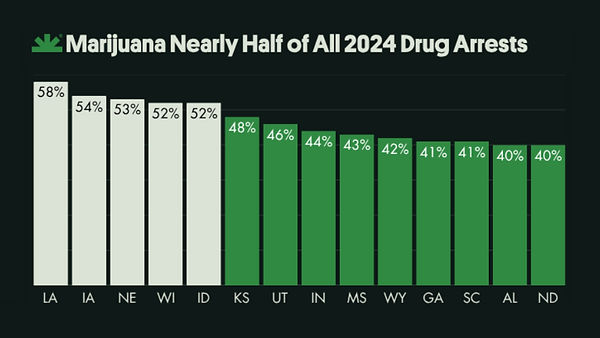
About Marijuana
The term ‘marijuana’ (sometimes spelled ‘marihuana’) is Mexican in origin and typically refers to any part of — or any one of — the three distinctive subspecies of the cannabis plant.
Cannabis Sativa - Tends to grow tall and stalky with a more potent cerebral high
Cannabis Indica - Tends to grow smaller and bushier with a more potent body high
Cannabis Ruderalis - Found primarily in Russia and Eastern Europe, often cross-bred into the other subspecies for its automatic flowering genetics.
Grown outdoors, the cannabis plant typically achieves maturity within three to five months. Cultivated indoors under optimum heat and lighting, the plant may reach maturity within as few as 60 days.
Despite almost a century of federal, criminal prohibition, an estimated one in seven US adults acknowledge being current marijuana consumers. Suncoast NORML and its members believe that our nation’s public policies should reflect this reality, not deny it. Marijuana was a term made popular by the yellow journalism of the early 20th century frequently written about in the newspapers of William Randolph Hearst. His disdain for immigrants and other ethnic minorities was sensationalized in his publications damning anything to do with these groups, including the use of cannabis. His papers frequently attempted to associate cannabis, which had been a staple crop in America since its colonization, with the foreign vernacular marihuana. The stories told in his yellow papers were often of murderous rampages of African American and Mexican immigrants high on marijuana. This push to control public opinion coincided with Federal Bureau of Narcotics drafting and fast-tracking of the Marihuana Tax Act of 1937 through the United States Congress. Overturned in 1969 in Leary v. United States as unconstitutional, it was replaced in 1970 by the current Controlled Substances Act.
Responsible Adult Use
Suncoast NORML supports the adoption of a legally controlled market for marijuana, where consumers can buy marijuana for personal use from a safe legal source. This policy, generally known as legalization has been adopted (either in part or in full) in a number of US jurisdictions: Alaska, California, Colorado, District of Columbia, Illinois, Maine, Massachusetts, Michigan, Nevada, Oregon, Vermont, and Washington. At present, Washington state does not permit personal home cultivation, and the District of Columbia do not permit retail sales.
In jurisdictions where legalization is not yet achievable, NORML also supports the immediate removal of all criminal penalties for the private possession and responsible use of marijuana by adults, including cultivation for personal use, and casual nonprofit transfers of small amounts. This policy, known as decriminalization, removes the consumer — the marijuana smoker — from the criminal justice system, but still maintains civil penalties/fines.
Enforcing marijuana prohibition results in the arrest of more than 600,000 individuals per year, predominantly people of color and young people. This annual total is far more than the total number of arrestees for all violent crimes combined, including murder, rape, robbery and aggravated assault.
Of those charged with marijuana violations, approximately 90 percent were charged with possession only. The remaining individuals were charged with “sale/manufacture,” a category that includes all cultivation offenses, even those where the marijuana was being grown for personal or medical use. In Alabama, Nebraska, North Dakota, South Dakota, Texas, Utah, and Wyoming more than 97 percent of all marijuana-related arrests in 2024 were for minor possession, not trafficking or sales.
.png)
.png)
Medical Marijuana
Marijuana, or cannabis, as it is more appropriately called, has been part of humanity’s medicine chest for almost as long as history has been recorded.
Modern research suggests that cannabis is a valuable aid in the treatment of a wide range of clinical applications. These include pain relief — particularly of neuropathic pain (pain from nerve damage) — nausea, spasticity, and movement disorders. Marijuana is also a powerful appetite stimulant, specifically for patients suffering from HIV, the AIDS wasting syndrome, or dementia, among other disorders.
More than 60 U.S. and international health organizations support granting patients immediate legal access to medicinal marijuana under a physician’s supervision and the majority of US states now regulate its retail access.
Industrial Hemp
Hemp is a distinct variety of the plant species cannabis sativa L. that contains minimal (less than 1%) amounts of delta-9-tetrahydrocannabinol (Δ-9-THC), the primary psychoactive ingredient in marijuana. It is a tall, slender, fibrous plant similar to flax or kenaf. Various parts of the plant can be utilized in the making of textiles, paper, paints, clothing, plastics, cosmetics, foodstuffs, insulation, animal feed and other products.
In 2014, members of Congress approved language (Section 7606) in the omnibus federal farm bill authorizing states to sponsor hemp research absent federal reclassification of the plant. A majority of states enacted legislation to permit such programs. In the 2018 omnibus federal farm bill, Congress de-scheduled hemp (as defined as cannabis plants with less than 0.3% Δ-9-THC) and cannabinoids derived from these plants from the Controlled Substance Act. States can now apply to have their commercial industrial hemp programs approved by the USDA. Currently a coalition of Big Alcohol & Big Cannabis companies are lobbying Congress and the President to ban intoxicating hemp products in the current appropriations bill.






